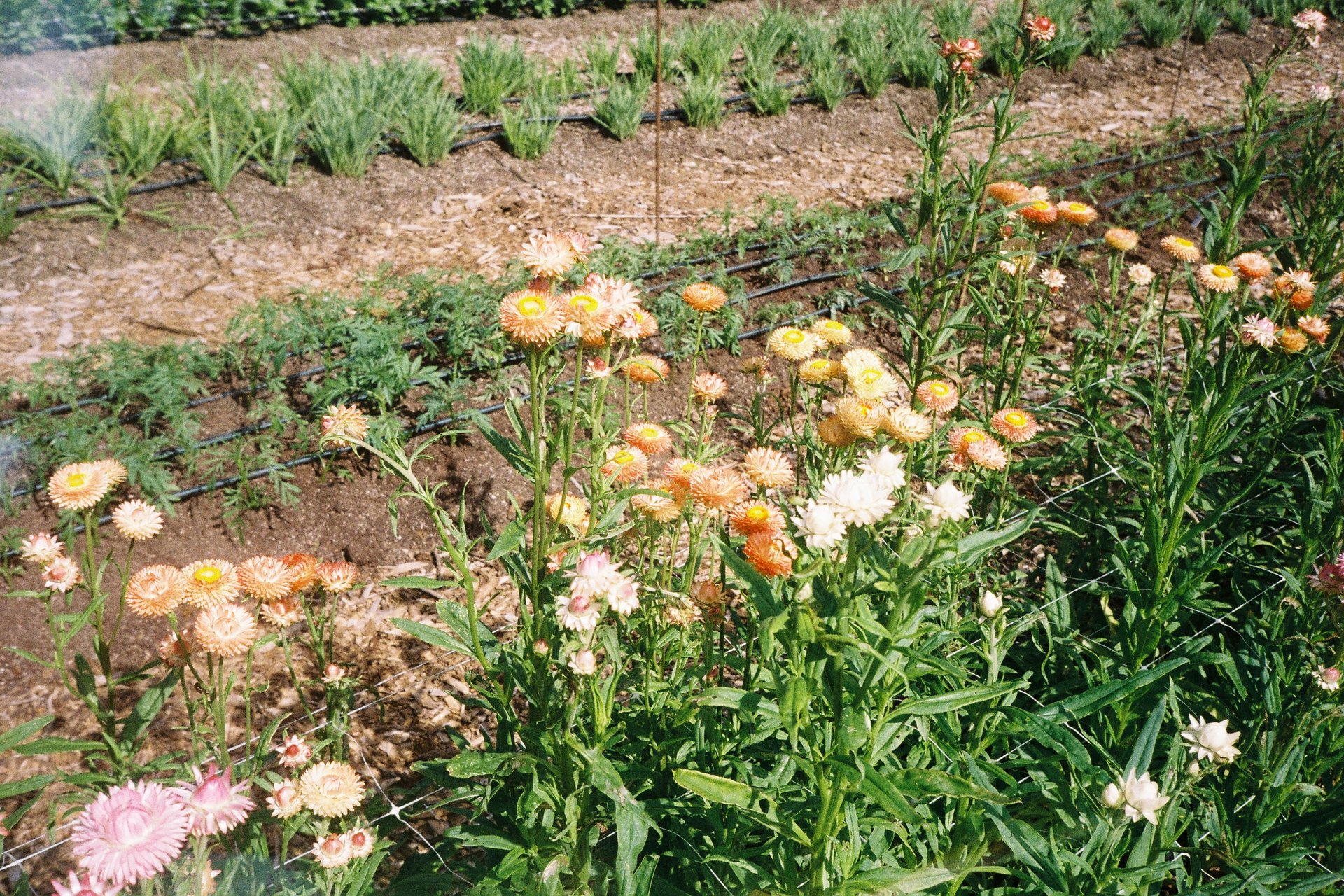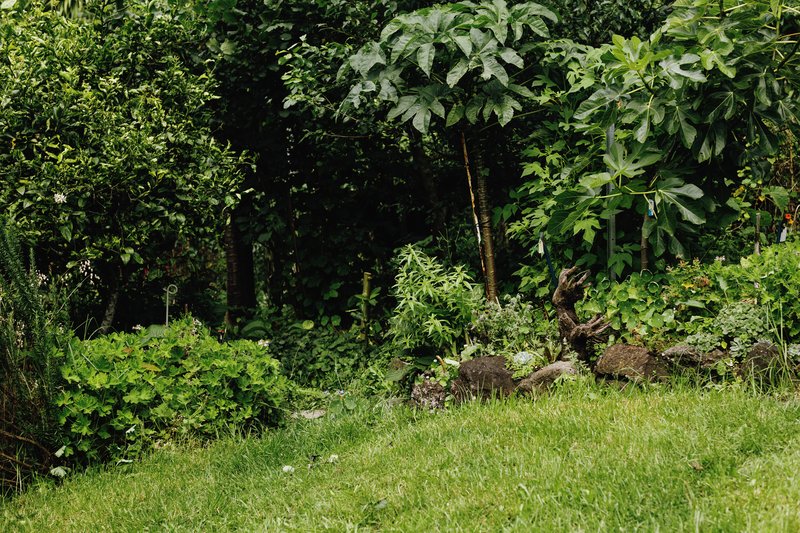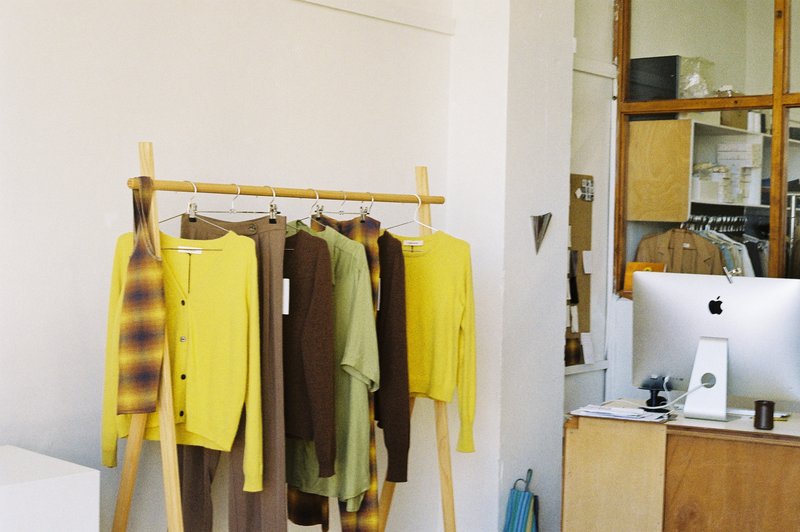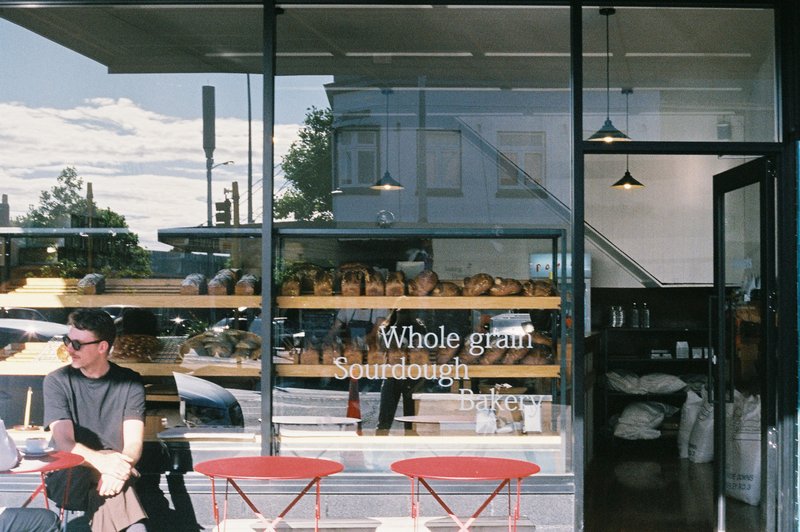Reject air-freighted flowers and celebrate the homegrown bloom. Floristry is an art form, and here, the woman behind Cecilia Fox, Melanie Stapleton, shares with us a florist’s vision for the industry of the future and why flowers hold a very particular magic, communicating and connecting us to the natural world and cosmos.

Let’s start from the beginning. Have you always been immersed in the world of floristry? How did you get into flowers and start your own business? Where is the name Cecilia Fox coming from?
I started floristry as a very shy teen in a florist shop in suburban Auckland, and I’ve been immersed in the flower world all of my adult life. I moved to London in the early 2000s and fell in love with the event floristry life. I had the opportunity to work for some of the UK’s top florists and freelance on some incredible events, hotels, and wildly extravagant weddings in Europe and England.
After moving to Melbourne, I started my business, Cecilia Fox. The name Cecilia Fox is a homage to both of my grandmothers; my middle name and my paternal grandmother's name were Cecilia, and Fox is my mother’s maiden name. I started writing a blog under the pseudonym Cecilia Fox, and people really connected with that name. It felt good to have a degree of separation from myself, so I embraced this. I started the business organically, slowly developing my own style and approach. It was this style and way of working that eventually became sought-after and well-known in our Melbourne community.

Low-cost imports infiltrated all sectors—the global flower trade included. Cut flowers, grown often with chemical pesticides, are shipped via aeroplanes, sea freight, and refrigerated trucks. When did you first observe growers and florists shifting from large-scale production to local, sustainable, and seasonal flower growing?
Using locally grown flowers was integral to our brand, and Cecilia Fox was known for its naturalistic and somewhat chaotic look. I remember the first time I used roses imported from Ecuador it was not because I wanted to but because the local market couldn’t supply on the scale we now needed. As my business grew, it felt impossible to stay true to my ‘only local’ ethos. It was at a time when all of our clients started wanting a particularly flower-heavy style, and the reflexed rose trend was in its infancy. Instead of sticking to my own style and designing in a sustainable way, I bowed to the fashion of the day. We used locally grown products as our first choice, but due to the scale of our work, we did rely on imported roses regularly. It never really sat right with me. Covid and moving to Aotearoa, New Zealand, gave us a chance to rewrite our principles and get back to our roots. Reducing the size of our business, reducing our costs, and honing in on local and seasonal products and composting.
What are the environmental issues faced by the cut flower industry currently? What drove you to shift your business to sourcing predominantly local flowers? What are the limits of this supply?
Heating of greenhouses and transport are the greatest producers of carbon emissions in the global supply chain. The social challenges of the floriculture industry in the global south are many. It’s complicated! For me, avoiding imported flowers and supporting our local growers will always be the most sustainable way forward. In Aotearoa, New Zealand, we have a huge network of commercial growers, growing at scale undercover. Hydrangeas and cymbidium orchids are some of our biggest flower exports. Generally, our growers are not heating or cooling glasshouses, and their carbon footprint is low. However, farming anything on a commercial scale requires inputs that can impact the environment in different ways. Water usage, chemical pesticides and fertilisers and biodiversity loss.
The Slow Flower movement in the USA and in the UK has grown exponentially over the last 10 years and inspired many growers and florists in Australia and Aotearoa, New Zealand. There are limits to our local supply, and the cut flower industry is not so different from the fashion industry or our food industry. However, good design, and thoughtful, creative design can work around these perceived limits and turn them into a positive design opportunity.

How did you cope with the Covid lockdown situation in Australia? Did this period motivate you to move back to Aotearoa, New Zealand?
Covid was a huge driver to us relocating to Aotearoa. Our business was completely shut down in March 2020 and we took it as a chance to take some real rest. I was burnt out and exhausted and we had refined our offering so much that when Covid hit it was tricky to ‘pivot’. We were extremely lucky in Australia to receive ‘job keeper’ payments from the government for ourselves and our staff.
My partner and I had been thinking about a change, Cecilia Fox had grown hugely, and while we loved every moment, It felt like it no longer served us as a family, and we had been contemplating a tree change or a sea change. It had honestly never occurred to us to move to NZ. I had left when I was 23 and although all of my family live in NZ, I didn’t think of it as home at all. Maybe it was a Covid fog, or maybe just pure naivety, but we decided to move countries in the midst of a global pandemic. We packed up our home of 12 years and our huge work warehouse in less than 8 weeks.
Beyond being a product, flowers are an experience, a gift from nature, but purchasing flowers has complex environmental and social consequences. How do you feel the pandemic offered an opportunity to reflect on life and how our decisions invariably impact others?
While flowers are a product that is bought and sold, if we think about flowers as an experience of beauty, joy, connection for the receiver and one of process and creation for the maker and the grower, it takes flowers out of that capitalistic cycle. Flowers, like all products that we consume, have a story and a history and of course, a future – hopefully that future is compost to regenerate our soils.

Locally, growers may have to light or heat greenhouses when growing all season. You are also working with many smaller producers. What have been the opportunities and/or challenges of sourcing locally?
Supporting a thriving flowering community is a huge part of what Cecilia Fox is about. The local growers in Aotearoa, New Zealand have been incredibly supportive in my first few years here, and the wonderful thing about buying directly from small-scale growers is the relationships that you create. The floristry world can be very competitive, and I’m always working to break down those barriers, hopefully supporting and inspiring our community without being smug or egotistical about it.
There is nothing wrong with being in business, except when that business is damaging society, damaging the Earth. What led you to remove plastics and focus on local and organically grown flowers?
Being in business in a system that doesn’t really work or is slow to move on new ideas can be a challenge. We can only do our best within the parameters of what is available to us right now. For me, that is, recycling soft plastics and choosing growers who don’t use plastic wraps (if I have that choice). Separating all our waste and composting our green waste. Buying flowers from our smaller-scale local growers and being an advocate in the industry for these things.

Do you think people are aware of where cut flowers come from?
I think that floristry is the type of industry that people assume is sustainable. After all, flowers are naturally biodegradable, renewable and grown using mostly just the sun and the soil, right? The problem, as in any industry, is the systems. Floriculture is a multibillion-dollar global industry, and it creates problems for our environment, the people who work on flower farms and florists. Many consumers don’t realise that there are flowers sold in Aotearoa, New Zealand that are imported from countries in the global south. While in Aotearoa, around 20% of flowers sold are imported, in the UK and the US, that number is more like 80 – 90%. Like with our food, the most sustainable way to run our floristry businesses is using flowers grown locally, outside and in season where possible. Make sure our green waste stays out of landfill.
How do you approach communicating the environmental impacts of the industry to peers and clients?
As a rule, I try to ‘teach’ by doing my job with joy and integrity and not ramming sustainability down people's throats. I think generally people want to do the right thing, and any amount of shame or guilt tends to have the opposite effect. When I teach workshops to florists about sustainability, I always talk about small steps. For the most part, florists love nature and want to protect our natural world; however, sometimes changing our habits feels hard. Using products that we know are bad, but the alternative seems tricky, time-consuming or not financially viable. Sharing my story and not being judgy about how much people are able to integrate into their work and any given time. We often focus on the environmental impacts of our businesses, but a truly sustainable industry and business takes into account its people, the planet and, crucially, our prosperity. Creating an industry that thrives now and into the future.

Could you share a bit about your experience here in Aotearoa, New Zealand? How does your approach fit into the floristry landscape here? What is the appetite for local production?
I think moving to a smaller country and, therefore, a smaller community always comes with its challenges, and I do feel like I’m still finding my way in the floristry community here. However, I’m endlessly grateful to be in Aotearoa and to continue finding my place and my people.
Could you share with us your approach to the design and creative process, working within your constraints, your techniques? Is there a rhythm to your creative process?
My creative process always starts with the materials and the seasons. In the floral world, we have become reliant on the props of industry, like floral foam and plastic wraps. While these products feel like they make our jobs easier at some point, we need to ask ourselves when does our own ease becomes the dis-ease of our planet and some other persons' problem. I love the ideas of a circular economy, and I remind myself often that there is no AWAY. Designing better means designing beautiful, awe-inspiring floral work at the same time as designing out waste and regenerating our natural world.

What are your favourite “things to do” in your day-to-day?
One of my favourite things about being a florist is the diversity of my days. Most of my days start getting my two children off to school and then it really depends on what I’ve got on. It might be heading into my studio at the Francie HQ in Grey Lynn or having a run and a swim on the beach before driving out to pick up flowers from growers. I might have to deliver flowers early for a wedding or event, or I might be unloading the van and sorting my compost. Some days are packed full of flowers and mess, and others are full of books and writing. I love to cook, so most of my days end cooking dinner for my family or pottering in my garden.
What excites and/or daunts you about the future of the floristry industry and why? What is your vision for the floristry industry?
I believe that florists and that flowers hold a very particular magic. Florists have the ingenuity and vision to make huge changes, but also to inspire change in others. Florists tell stories of the natural world, we connect people with the natural world, and we create a valuable and sensitive product. We have experience with reciprocity, cycles, and seasons every day. It is such a privilege to do this work and an even greater privilege to share it with others. I believe that our industry is so much more than selling pretty flowers and it is so wonderful to see some of our young, inspired, new florists coming though starting their businesses with sustainability at the heart of what they do. I’m endlessly positive about our beautiful industry, we have some hurdles to jump over, like all industries, but, working every day with beauty, and with the real grit of life is so inspiring.

How do you balance it all? Do you have any daily practices that anchor you and keep you balanced?
I am completely unbalanced! I don’t really have any daily practices, I don’t meditate or do yoga now, although I have in the past. Things that anchor me and keep me focused on my wild aspirations are the ocean, my garden, my kids, the endless support of my partner Jamie, cooking, and being in nature.
What is next on the agenda for you? Are there any upcoming projects you want to share?
I’m in the process of booking in workshops around Aotearoa, New Zealand and Australia, inspiring florists to be more sustainable in 2024. I’ve got a very beautiful wedding season for 2024 – 2025 shaping up. I have lots of wonderful collaborations with amazing aligned brands. And I’m very excited about a special book project that I have in the pipeline right now.

Thank you, Melanie! If you’d like to discover Melanie’s beautiful work and/or work with her, her Instagram is this way, and her website is here. We are also grateful for the opportunity of photographing Melanie and some of her lovely suppliers, Mandy and Craig, at their farm, Organic Herbs and Seedlings | Plant Nursery in Warkworth and Lottie from Lottie’s Bloomers in Whangarei.




